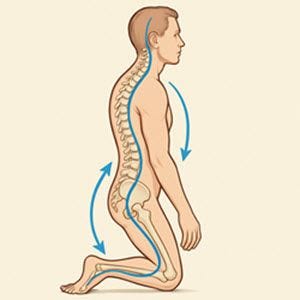How Your Feet Affect Your Spine (and Vice Versa)
Most people think of their feet only when they hurt. But those two structures at the bottom of the body are the foundation for everything above them. Every step, shift, and stance sends messages through the legs, hips, and spine. If that foundation is uneven, the entire structure compensates.
The Chain Reaction: from the Ground Up
When the arches of the feet drop or collapse, the body loses its natural shock absorbers. That changes how the knees rotate, how the hips move, and how the spine aligns. A fallen arch on one side can make a leg appear shorter, tipping the pelvis and forcing the spine to lean or twist to stay balanced. Over time, this uneven pressure can irritate joints, tighten muscles, and wear down the body’s alignment system. Chiropractors often see these patterns in patients with persistent low back pain or recurring neck tension that never seems to stay corrected.
Foot scanners or posture exams can reveal these imbalances. Many chiropractors use custom orthotics or structural corrections to restore symmetry, allowing the body to stand, walk, and move with less stress. When the feet are supported, the spine often holds its adjustments longer, and muscles relax more easily.
The Reverse Effect:From the Spine Down
The influence also runs the other way. If the spine is misaligned or one hip is higher, the weight distribution across the feet changes. People with chronic low back or sacroiliac issues often show uneven shoe wear—one heel flattened, the other barely touched. These subtle differences can make walking less efficient and contribute to knee or ankle pain over time. Correcting spinal balance helps restore proper motion through the hips and legs, allowing the feet to function the way nature intended.
Healthy alignment is a two-way street. When chiropractors check posture from head to toe, they can see how each part of the structure relates to the next. That’s why it’s common to check foot balance during spinal care. Supporting one without addressing the other only fixes part of the picture.
The simple act of standing can reveal so much. Feet turned out, uneven shoulders, or one pant leg hanging lower can all point to a chain reaction that starts—or ends—at the feet. The connection between the arches and the spine isn’t just theoretical. It’s visible, measurable, and correctable when both ends of the body are checked and supported.


